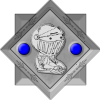That, or the dragons are highly intelligent mythical creatures with a degree of omniscience when it comes to Dany.On another note, this episode pretty much confirms that Dany has some sort of telepathic control of her dragons. There's no other way she could have Drogon come to her after that speech or have Viserion and Rhaegal blast their way out of the pyramid.
GoT - Is Over, Post Your Drogon Sightings
- Thread starter Araxen
- Start date
You are using an out of date browser. It may not display this or other websites correctly.
You should upgrade or use an alternative browser.
You should upgrade or use an alternative browser.
Is there a difference between omniscience with Dany and telepathy with her?That, or the dragons are highly intelligent mythical creatures with a degree of omniscience when it comes to Dany.
I am just glad that littlefinger upgraded his teleporter from the personal kind to the kind that can move a whole army.Sansa is just a retard like all the Stark children.
She only seems cunning because Jon went full retard this episode taking Ramsay's bait even when he explained the night before that there only chance was to not do what he did. Sansa was just being a whiny bitch when she was complaining about Jon not asking her advice. But then not actually having any advice when he did ask. She did give solid advice about not being baited by Ramsay but Jon of course ignored it. She rides in with littlefinger's army at the last minute to save the day but only because she had turned down the same army months earlier.
Littlefinger is the Norths only Hope because god knows the Stark kids are dumb as bricks and their cousin Robin may actually be dumber.
Yes.Is there a difference between omniscience with Dany and telepathy with her?
- 15,567
- -202
I don't know this but I bet it was based on theBattle of Cannaewhere Hannibal wiped out an 86,000 man Roman army in a very similar tactic.The suffication scene freaked me the hell out
The Roman infantry, now stripped of protection on both its flanks, formed a wedge that drove deeper and deeper into the Carthaginian semicircle, driving itself into an alley formed by the African infantry on the wings.[33] At this decisive point, Hannibal ordered his African infantry to turn inwards and advance against the Roman flanks, creating an encirclement in one of the earliest known examples of a pincer movement.
When the Carthaginian cavalry attacked the Romans in the rear and the African flanking echelons assailed them on their right and left, the advance of the Roman infantry was brought to an abrupt halt. The Romans were enclosed in a pocket with no means of escape. The Carthaginians created a wall and began destroying them. Polybius wrote, "as their outer ranks were continually cut down, and the survivors forced to pull back and huddle together, they were finally all killed where they stood."[31]
As Livy described, "So many thousands of Romans were dying... Some, whom their wounds, pinched by the morning cold, had roused, as they were rising up, covered with blood, from the midst of the heaps of slain, were overpowered by the enemy. Some were found with their heads plunged into the earth, which they had excavated; having thus, as it appeared, made pits for themselves, and having suffocated themselves."[2]:22.51 Cowley claims that nearly six hundred legionaries were slaughtered each minute until darkness brought an end to the bloodletting.[34] Only 14,000 Roman troops managed to escape, most of whom had cut their way through to the nearby town of Canusium.

Great battle scene though, and great episode even though we all knew the knights of the vale were going to save the day.
Since they did elude to a coming conflict with Euron now that Theon and Yara have told Dany his plan. That beng to give her his cock, take her dragons and eventually kill her off. It seems that they will have to introduce the Dragon Horn as a means for Euron to actually be a threat. I hope its introduced in a cool way at least. Otherwise the entire conflict is going to be lol Dragonfire, The End.
Book Euron has been built up as all kinds of despicable and awful. Long rap sheet includes forcing cannibalism upon others, buttraping his own brothers when they were kids, multiple acts of kinslaying, killing his lovers for no reason...etc. He's like GRRM's version of the Joker at this point.
Book Euron has been built up as all kinds of despicable and awful. Long rap sheet includes forcing cannibalism upon others, buttraping his own brothers when they were kids, multiple acts of kinslaying, killing his lovers for no reason...etc. He's like GRRM's version of the Joker at this point.
Siddar
Bronze Baronet of the Realm
I would note that I saw something with Tyrion this episode. His character only sparkles when he has a strong authority figure to contend with. He needs a Daenerys or Tywin to argue for a more humane approach with. If he is in charge like he has been the rest of this season he is very boring. I was a bit surprised he held to his principles after the masters betrayal. I expected him to show bit of his fathers viciousness but he didn't.
- 15,567
- -202
Is After the Thrones available immediately online or something? My DVR doesn't pick it up until Monday night.yea they mentioned the battle of canae during the "after the thrones" segment.
Gavinmad
Mr. Poopybutthole
Because Jon is a threat to her claim to Winterfell. I mean don't get me wrong, it would be really dumb, but would still be better than her keeping quiet about the Vale army for absolutely no reason at all. If this were her plan, she wouldn't have expected Jon to go full retard and get his army completely slaughtered, she probably would have just wanted to take him down a peg by being the one to save the day. I mean he is literally useless to her now, but if at least some of his force was still intact, he would have had some value.But why? Why would Sansa want to fuck over Jon and the Wildlings/few Northern houses that were willing to ally with them?
What a boring, predictable episode. Killed off the Stark Redshirt who was re-introduced only to try and get a cheap tear out of the audience. Somehow the dogs are starving and Ramsey is down there tied up but they will only come after Sansa is finished talking with him. In some universe an entire fleet of mounted knights managed to march all the way from the Vale to the battleat the last possible secondwithout ever being spotted by Bolton or any other Northern house. The entire thing was cheap. I watch this show because it was good at keeping me on my toes. But I could have told you basically everything that happened this episode. In fact I think almost everyone in this thread did. Dany will burn the fleet with dragons, Dany will ally with the Greyjoys, Rickon will die, Jon will lose terribly until the Vale shows up. Yaaaaaawn.
Warmuth
Molten Core Raider
- 885
- 555
Pretty much. Euron this far just appears to be the rude uncle that gets drunk at bbqs. He killed Balon but everyone disliked him anyway so no big deal. Ironborn are all assholes in general so there's not much shock or ill will when he wants to kill Yara and Theon. Joff and Ramsay fucked with people that were central to the story and considered "good guys" or at least became sympathetic as a result of said fucking with. It gave them tons of heat and made them real villains. Euron might do some raping and pillaging, average Ironborn activities which Yara herself was loathe to give up but he's going to need to do something very significant to be anything other than more useless filler to delay Dany.Since they did elude to a coming conflict with Euron now that Theon and Yara have told Dany his plan. That beng to give her his cock, take her dragons and eventually kill her off. It seems that they will have to introduce the Dragon Horn as a means for Euron to actually be a threat. I hope its introduced in a cool way at least. Otherwise the entire conflict is going to be lol Dragonfire, The End.
Book Euron has been built up as all kinds of despicable and awful. Long rap sheet includes forcing cannibalism upon others, buttraping his own brothers when they were kids, multiple acts of kinslaying, killing his lovers for no reason...etc. He's like GRRM's version of the Joker at this point.
Gavinmad
Mr. Poopybutthole
I assumed the same, and in addition to completely ignoring travel times, the show also completely ignores the logistical issues of keeping a large force of men together for any extended period of time, to say nothing of cavalry.I'm pretty sure when Littlefinger met Sansa at Molestown the Knights of the Vale were in the North with him and never left.
Sloshed
Lord Nagafen Raider
- 57
- 2
Rickon was stupid. He should have run zig zagging so Ramsay couldn't gauge how to lead him with arrows. What's the deal with Winterfell? One little bitty door that Wun Wun could knock down in 2 minutes. I thought these castles were prepared to repel sieges. At least riverrun had a moat and a draw bridge to make it harder to access. How long did Ramsay think he could hole up in that impenetrable fortress called Winterfell?
There's also the fact that they could go in the same way they got out originally through the crypts way back in like book 1, and could have easily trojan horsed his ass by just coming in through the tunnels and opening the gates in the middle of the night.Rickon was stupid. He should have run zig zagging so Ramsay couldn't gauge how to lead him with arrows. What's the deal with Winterfell? One little bitty door that Wun Wun could knock down in 2 minutes. I thought these castles were prepared to repel sieges. At least riverrun had a moat and a draw bridge to make it harder to access. How long did Ramsay think he could hole up in that impenetrable fortress called Winterfell?
Share:







